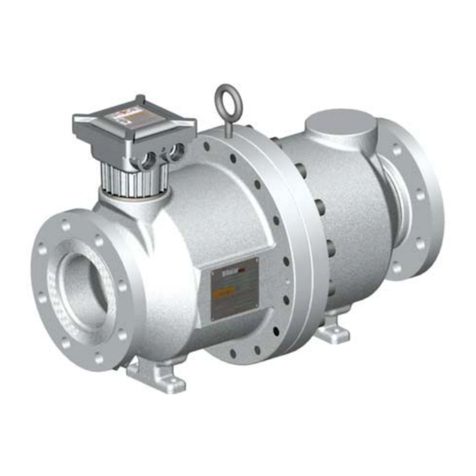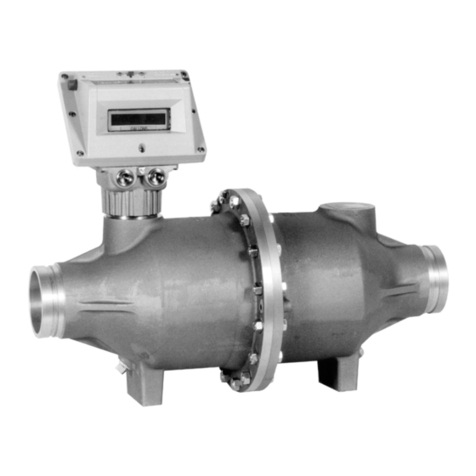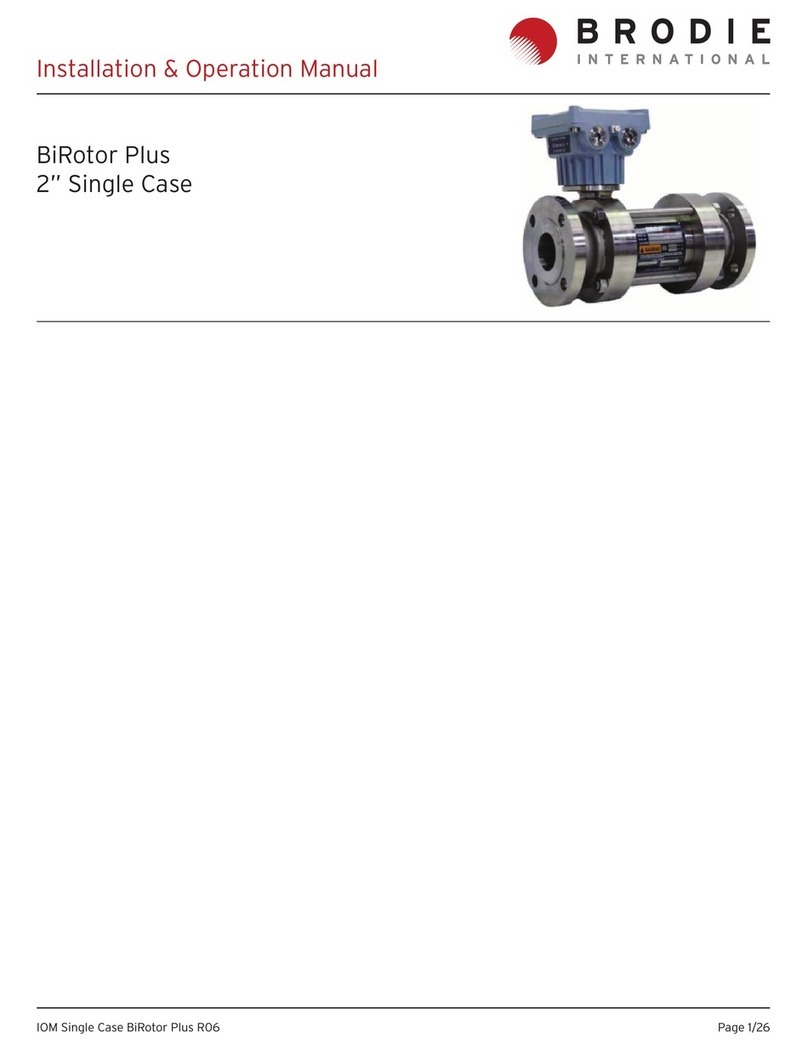
Page 9/37IOM BiRotor 3” to 6” R03
6 General
The Brodie BiRotor Meter, hereafter called meter, is
a precision made, accurate instrument that uses the
positive displacement metering principle to measure
flow and is designed to meter all petroleum products,
crude and refined, as well as industrial liquids.
7 Meter Description
Models B061A through B061A
The meter generally consists of a measuring unit
installed in an outer housing or case and adjuster
for calibrating the meter and the necessary count-
er equipment for registering the amount of liquid
throughput.
The principle of operation of the meter is embodied in
the function of the two rotors which are the only mov-
ing parts within the measuring unit. They are always
dynamically balanced but hydraulically unbalanced.
The rotors are not in metal-to-metal contact with one
another or with the housing in which they rotate.
They are maintained in proper timed relationship
with one another by helical gears. They divide the
volume being measured into segments, separate each
segment from the flowing stream momentarily, then
return them to the stream. The segments of flow are
counted and the results are transferred to a totalizing
register or other flow recording device by means of a
gear train.
The BiRotor Meter is unique in that it does not use
any sliding vanes or reciprocating parts nor are there
any shock loads on the mechanism during operation
resulting from the shifting of offbalance masses.
An accuracy adjuster, located on the output of the
counter drive gearing permits the operator, at the
time of installation, to adjust the output of the mea-
suring unit to read in an exact number of units of
volume. Thus, the accuracy adjuster acts as a variable
gear changer (similar to the speeding up or slowing
down of the timing of a watch) and allows an adjust-
ment of ±3% of meter throughput. The meter may be
supplied with any of several accessory items such as
high frequency pulse generator, impulse contactor,
automatic temperature compensator (ATC), etc. The
units provide various functions for local and/ or re-
mote control and local and/or remote readout.
Models B171A through B195A
The Brodie Automatic Pressure Lubricated (APL) Bi-
Rotor Meter, Models B171A through B195A, is designed
to meter liquids with low lubricity such as butane,
propane, ethane, natural gasoline or liquids with en-
trained solids such as crude oil.
Long life and low maintenance are assured with the
automatic pressure lubricating system, hereafter
called APL, which provides constant clean lubricant
to the ball bearings, timing gears and register drive
gears of the measuring unit. Bearing and gears are
isolated from the flowing stream by mechanical seals.
The meter generally consists of four basic compo-
nents: a measuring unit installed in an outer housing
case, the APL unit to provide bearing and gear lu-
brication; an adjustor for calibrating the meter and
the necessary counter equipment for registering the
amount of liquid throughput. The principle of opera-
tion of the meter is embodied in the function of the
two rotors which are the only moving parts within the
measuring unit. They are always dynamically balanced
but hydraulically unbalanced. The rotors are not in
metal-to-metal contact with one another or with the
housing in which they rotate. They are maintained in
































